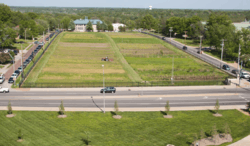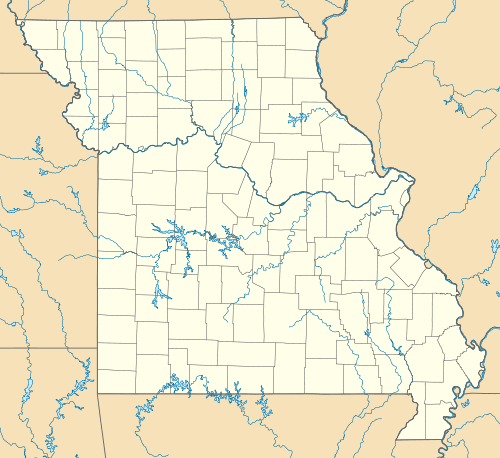Sanborn Field
|
Sanborn Field and Soil Erosion Plots | |
 | |
|
View of Sanborn Field from the adjacent Bond Life Sciences Center on the University of Missouri campus | |
 | |
| Location | Columbia, Missouri |
|---|---|
| Coordinates | 38°56′27″N 92°19′17″W / 38.94083°N 92.32139°WCoordinates: 38°56′27″N 92°19′17″W / 38.94083°N 92.32139°W |
| Built | 1888 |
| Governing body | State |
| NRHP Reference # | 66000413 |
| Significant dates | |
| Added to NRHP | October 15, 1966[1] |
| Designated NHL | July 19, 1964[2] |
Sanborn Field is an agricultural experiment field, located on the University of Missouri campus. Established in 1888, Sanborn Field was the first facility in the United States intended to measure erosion and run-off for differing crops and agricultural practices. Work at Sanborn Field was influential in the establishment of soil conservation policy in the United States.
Research on soil properties at Sanborn began with manure fertilizer and shifted to chemical fertilizer in 1914. Experiments have also shown the value of crop rotation, while other experiments focused on the recovery of exhausted soils.
The fields, once in a rural area, are now surrounded by built-up portions of Columbia. The plots measure 52.5 feet (16.0 m) by 118.5 feet (36.1 m).
Aureomycin, the first tetracycline to be identified, was discovered in a sample of soil collected from plot 23 of Sanborn field in 1945.[3]
References
- ↑ "National Register Information System". National Register of Historic Places. National Park Service. 2008-04-15.
- ↑ "Sanborn Field and Soil Erosion Plots". National Historic Landmark summary listing. National Park Service. Retrieved 2008-06-18.
- ↑ "100 Years -- Sanborn Field: A Capsule of Scientific Agricultural History in Central Missouri:"Aueromycin, Plot 23, and the Smithsonian Institution"". Retrieved 2013-12-10.
External links
- Sanborn Field Real-Time Weather Station Conditions
- Photographs of Sanborn Field at the National Park Service's NRHP database
